Modifying your interior and exterior space to suit your tastes and needs is your prerogative as the property owner. One of the many things to consider is lighting. The right lighting can make a room, and the same principle applies to your landscape.
When done well, quality landscape lighting does more than just illuminate the surroundings. It’s also an effective way to set up the mood and atmosphere to give your exterior space a character all its own. Here’s a list of dos and don’ts of outdoor lighting that can give you a helping hand as you experiment with your landscape lighting.
DOS
-
1. Start with the house
Most homeowners tend to start by lighting up their pathways and trees. However, it’s generally a better idea to light up your house first. The house is the central element of your property, so it deserves pride of place when it comes to lighting. With the right lighting, you can illuminate your home and make it stand out from other elements outside.
Highlight your walls and other architectural features that make your home unique. Include your upper storeys. Elements like peaks and overhangs can add an ethereal quality to your home when lit up from below. As an added bonus, all that light can heavily contribute to keeping you safe and secure at night.
-
2. Work with layers
When setting up your lights, remember that you can add layers to the arrangement to create a sense of depth. Identify the highlights in your garden or backyard (e.g. a tree or statue). Emphasize that element by aiming multiple spotlights at it to illuminate it and capture the eye.
Incorporating layered lighting can also reveal different silhouettes for more dramatic effect. You can also create more depth for your outdoor space by positioning your lighting properly. In many cases, only the facade of the house is lit so from the inside, the landscape looks dark. Set up some lights around the perimeter or around the trees to increase your sense of outdoor space and add to your home’s security.
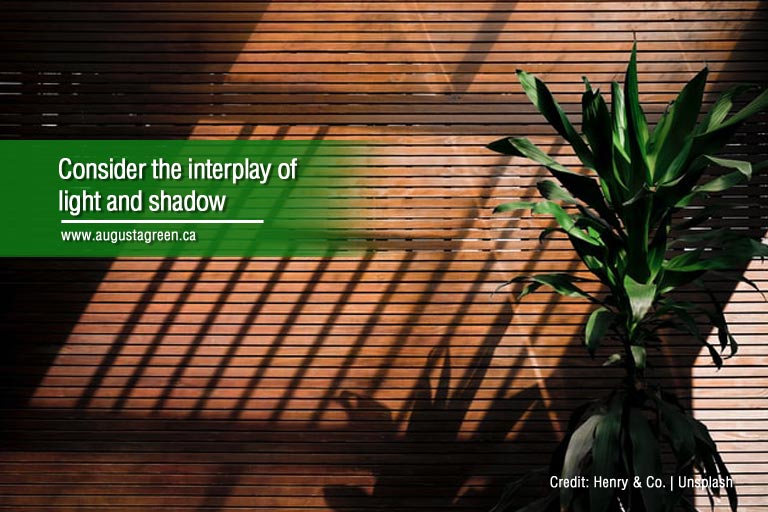
-
3. Make good use of shadow
The interplay of light and shadow adds a certain mystery interesting elements outside. One landscape lighting idea you can use here is setting up well lights at the base of a stone wall. The effect of light and shadow together accentuates the texture of the stone, creating more depth. You can also try silhouetting a tree against a surface (e.g. the house’s facade) to add depth to an otherwise flat surface.
-
4. Opt for LEDs
Gone are the days when lighting fixtures were harsh and had high energy consumption. Modern LED lights use up to 60 to 70% less energy than halogen lights, and in much warmer tones than were previously available. LED lights can offer more bang for your buck compared to halogen lights, and come in a wide variety of designs and brightness.
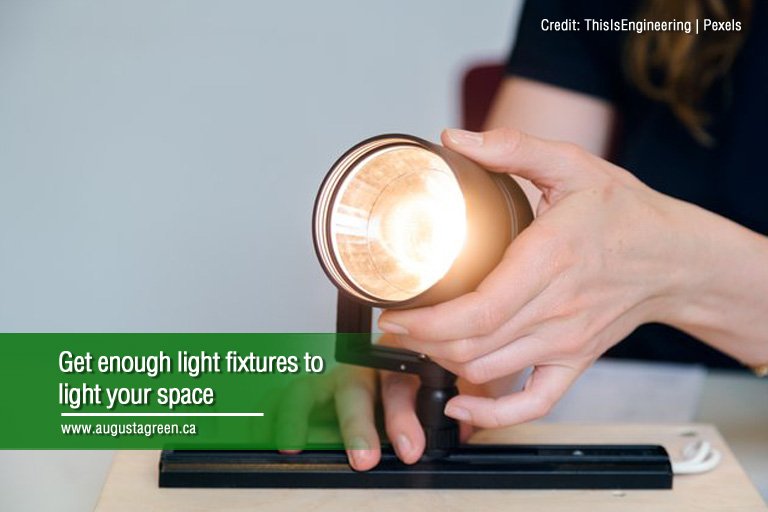
-
5. Install enough fixtures
It’s vital you install enough fixtures to get the effect you want from your lighting. One mistake many homeowners make is buying fewer fixtures but increasing the brightness of the ones they have. This approach creates a sharp contrast between bright and dark, rather than the desired subtle effects.
If you’re looking to save money, install your lighting in phases. Start with your home and make your way outward. This approach ensures each area outside achieves the look you want a little at a time.
-
6. Update your lighting with smart controls
Smart timers for lighting systems are becoming a more common upgrade for many homeowners. These technologies are a great way to give yourself more control over your system and modify it for increased convenience. Installing smart controls allows you to set your lights to turn off and on by themselves, allowing you to leave the system on its own after setting the times you want.
For extra convenience, modern smart controls also take daylight savings into account. Enter the time and coordinates for your home, and the timers can figure out when they’re meant to turn off and on based on the date.
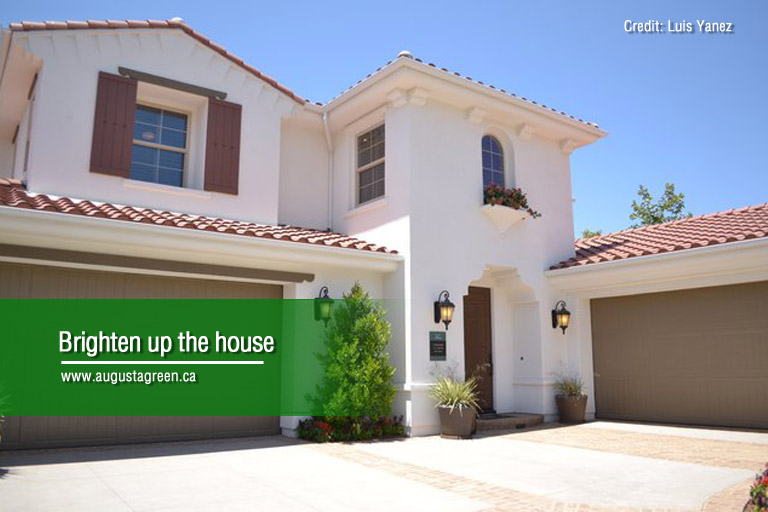
DON’TS
-
1. Stick to obvious areas
Many homeowners stick to lighting the obvious places (e.g. pathways, patios, and trees). These are natural places to set your lights, but remember to light other spots outside as well. Neglecting other spots tends to isolate the lit areas, leaving them surrounded by darkness.
Counter this by adding more lights around the perimeter of your property, in plant beds, and around trees. This approach helps the framework of the landscape as a whole and provides a greater sense of depth. The added lighting also removes any blind spots that intruders might exploit.
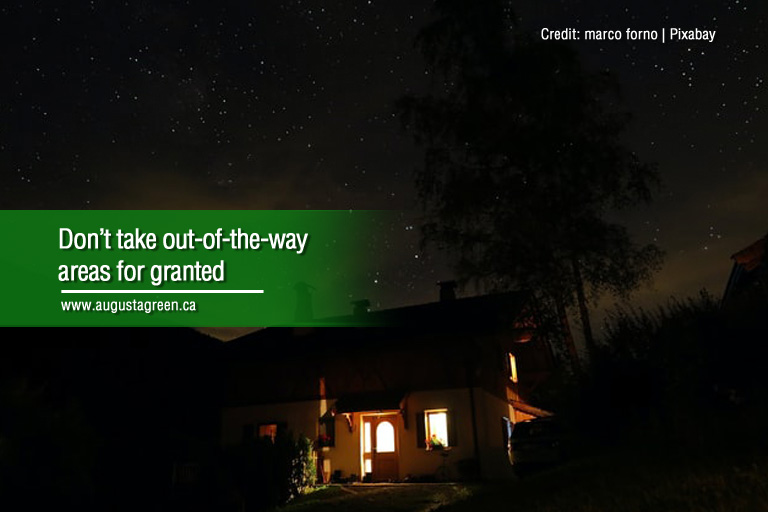
-
2. Ignore the out-of-the-way areas
Large, attention-grabbing elements, like trees and sculptures, are usually the go-to targets for lighting. However, it’s a good idea to pay attention to smaller spaces as well. Illuminating these smaller areas can accent larger elements.
Sharing the spotlight with these oft-forgotten places also helps make the landscape, as a whole, more consistent and adds some extra spice to the exterior. For the more security-conscious, lighting up these darker spaces also helps eliminate blindspots to strengthen your security.
-
3. Set lights in a straight line
A common mistake many homeowners make is setting up lights like a runway. A more ideal pathway lighting approach refrains from setting your fixtures in a straight line (e.g. along a path). There are more interesting ways to set up your lights to make a more visually appealing experience.
Try staggering the lights a little or arrange them to shine down the path to make the pathway more interesting. Think of it as a great way to introduce visitors to your home when you’re in a mood to show off. One thing to avoid is going overboard with your pathway lighting; too unique a look comes off as busy or distracting, so avoid taking things too far.
-
4. Use motion sensor lights for security
You may have heard that motion-sensing lights are an effective method for deterring intruders. Supposedly, having the lights suddenly come on can spook intruders when they least expect it and get them to leave. However, the rule of thumb is that more lights equal more security.
Having fewer lights generally invites intruders, even if you do have motion-sensitive lights. Those lights only turn on when an intruder has already made up their mind to enter a property. You’re better off investing in regular lights to illuminate your landscape and discourage trespassers from ever entering.
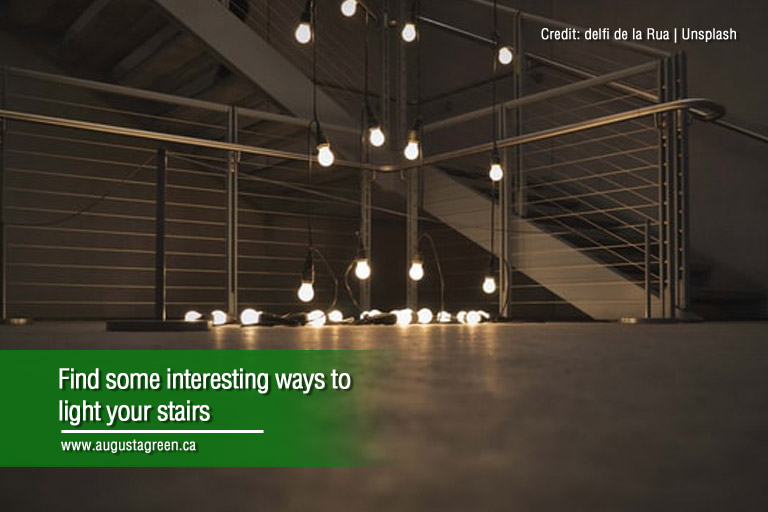
-
5. Light pathways and staircases the same way
It’s tempting to use the same techniques when lighting your pathways and staircases. However, both areas are different and require different techniques to light properly. Pathways are flat (so they won’t create shadows), while stairs will show shadows with even the smallest amount of light.
One approach to lighting staircases is to light the top, but this makes the bottom stairs and landing impossible to see. Instead, install lights on each riser to make the steps easier to see and safer to use. On wider stairs, you may need more than one lighting fixture on each riser to illuminate them fully.
There’s more to effective landscape lighting design than lighting up your walkways and trees. A well-designed system takes advantage of the interplay of light and shadow to evoke a particular mood or draw the eye to features you want emphasized, be it a tree or a gazebo. Whatever your plans for your landscape, remember these helpful insights to help make your landscape pop the way you envisioned it.
At Augusta Green Sprinklers, we’re ready and waiting to provide full landscaping services to help beautify your exterior spaces. Whether for security or aesthetics, we’re here to offer a helping hand when you need one. Call us now at (416) 227-1666 for a free estimate.

